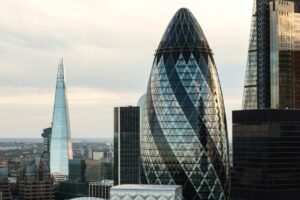Sarah Wakefield, Business development Manager, Oxford Capital explains why tax advantaged investments are best used all year round.
The start of the tax year is much like the start of a new year, where instead of making resolutions to improve yourself or refocus your priorities, it is time to kick start financial planning for the year. This often involves utilising allowances for ISAs and pensions, plus the IHT gifting annual allowance, but one area often overlooked is alternative tax advantaged investments.
Whilst it is tempting to leave these higher risk alternative investments to later in the tax year, this restricts the opportunities for investors. VCT’s may have offers close, deployment of capital over a short period into an EIS may involve less diversification or companies may be selected based on timing rather than quality.
For investors
From an investors point of view, getting the funds deployed before the end of the tax year can be important if it is necessary to offset against the current year – or in the case of EIS, carry back the income tax relief to the previous tax year.
When considering EIS in particular, the best approach therefore is not to leave investing too late in the tax year, as EIS managers tend to take some time to invest, but also to make use of all the tax reliefs whilst not compromising on diversification or quality.
Like many investments it is time not timing, although for EIS, the ability to claim the various tax reliefs is dependent on the timing. For Capital Gains tax (CGT) deferral, the deferral period starts 12 months before the gain is made and ends 36 months after, so any EIS qualifying investments made in that period could therefore defer the CGT liability. Clearly procrastination here means that the 4-year period is reduced, combined with the time which many EIS providers take to deploy may leave investors out of time if they leave it too late. Combining the timing of investment for the CGT deferral with the income tax relief, which is based on the tax year in which the investment is made, allows investors to maximise all available reliefs.
One aspect of tax planning I often hear clients procrastinate on is inheritance tax (IHT) planning, which is understandable, after all who wants to talk about dying? However, inheritance tax has fast become a tax that affects the middle class and not just the wealthy. We have seen IHT receipts hit £7.1bn last financial year, this is HMRC revenue from a tax that could be legitimately avoided by planning.
Whilst some solutions to mitigate IHT will involve the client giving up some or all access, others, such as those investments that qualify for business relief, the client retains access. In the case of EIS, which normally qualifies for business relief, the client still has access to their money but the investments are illiquid until an exit occurs.
Much like new year’s resolutions, thinking about the solution throughout the year leads to success. An evergreen EIS strategy is designed to invest throughout the year, allowing the manager to select companies, after completing due diligence, that they believe are likely to perform well.
For founders
To understand EIS investments better it is worth considering it from the investee companies’ point of view as well. Funding clearly isn’t always required at the end of the tax year; it is required as and when the company needs it. In this current climate, managing the company’s cash runway is key. One of the biggest risks to a new company is running out of money, so the ability to find funding for fledgling companies, managing the rate at which the companies burn through cash, and managing the cash runway are important factors to the success of the business. Like a seedling that needs water, at the right time, to grow into a mighty oak tree, every company starts off life needing the right amount of funding, at the right time, in order to grow.
In the very early stages of a company, this funding is likely to be from friends and family, but as the company grows and hits milestones, such as demonstrating product market fit (when the product they are manufacturing starts to gain traction in the market by making sales) further funding is required. This funding could be towards natural growth, to extend or develop products, or to expand into new markets.
From a founder’s point of view, finding this funding can take time, and is done whilst they are still trying to establish or grow their new business to the next stage. A founder in fundraising mode will need to target prospective investors, meet these prospects, develop their equity story and prepare data and information on their company, product and market. This process can take time away from the business, so it is an exercise that they may not wish to do too often. Finding investors who will help mentor and support them to the next round of funding is also very valuable to founders.
As an EIS provider, Oxford Capital back founders, we will help the founders of our portfolio companies to grow, assist with finding future funding and, providing the companies meet key performance indicators, may offer follow on funding as well. These performance indicators may focus on achieving a certain amount of growth or achieving a specific milestone number of customers, but we will always consider our investors best interests as well.
So, this tax year consider your financial resolutions to plan early to take full advantage of the potential tax benefits of EIS.














